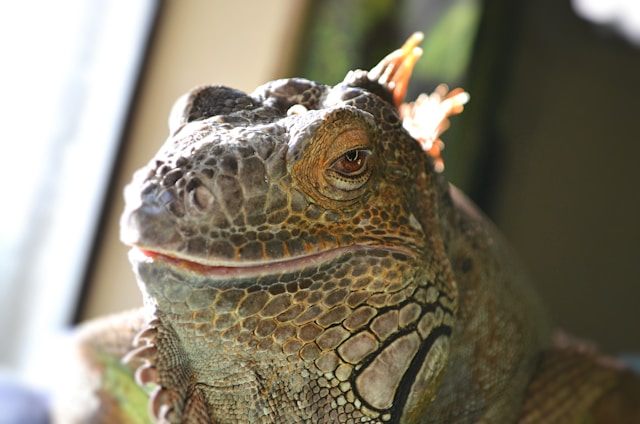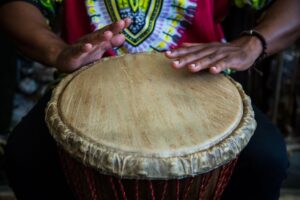Belize’s tropical paradise is not only adorned with lush jungles and azure waters but is also home to a fascinating array of wildlife, including the iconic green iguana. These majestic reptiles, with their vibrant emerald hues and distinctive spiky crests, are a symbol of Belize’s rich biodiversity. In this article, we delve into the world of the green iguana, exploring its anatomy, behavior, habitat, and the efforts being made to conserve this magnificent species in Belize’s diverse ecosystems.
Introduction to Belize’s Iguanas: A Diverse Family
Belize boasts a rich diversity of iguana species, each contributing to the intricate tapestry of its natural heritage. Among these, the green iguana stands out as a prominent representative, captivating both locals and visitors with its striking appearance and fascinating characteristics.
One of the most notable features of Belize’s iguana family is its variety. Alongside the green iguana (Iguana iguana), Belize is also home to the black spiny-tailed iguana (Ctenosaura similis), the common iguana (Iguana iguana rhinolopha), and the invasive Mexican spiny-tailed iguana (Ctenosaura pectinata). Each species brings its own unique traits and behaviors, contributing to the ecological balance of Belize’s ecosystems.
The green iguana, specifically, captures the imagination with its vibrant green coloration, which serves as effective camouflage in the dense foliage of Belize’s rainforests. Its long, slender body is adorned with rows of pointed scales and a prominent crest along its back, adding to its regal appearance. These adaptations not only aid in concealment but also offer protection against predators.
In addition to their physical characteristics, Belize’s iguanas exhibit diverse behaviors. Green iguanas are primarily herbivorous, feeding on a diet of leaves, fruits, and flowers. They are also proficient climbers, using their strong limbs and sharp claws to navigate treetops with agility. During the breeding season, male green iguanas display territorial behavior, defending their mating territories with vigorous displays and head-bobbing gestures.
Understanding the intricacies of Belize’s iguana family is crucial for conservation efforts and maintaining the delicate balance of its ecosystems. By appreciating the diversity and significance of these reptilian inhabitants, we can work towards preserving their habitats and ensuring a harmonious coexistence with nature in Belize’s wilderness.
The Green Iguana: Anatomy, Behavior, and Habitat
The green iguana, scientifically known as Iguana iguana, is a captivating species that thrives in the tropical climates of Belize. Known for its vibrant green coloration, the green iguana’s anatomy offers insights into its remarkable adaptability and survival strategies.
An essential aspect of the green iguana’s anatomy is its impressive size. Adults can grow up to six feet in length, with their long, muscular tails accounting for a significant portion of their body. This tail serves multiple purposes, acting as a counterbalance during climbing and swimming and as a weapon against potential threats.
The distinctive spiky crest along the green iguana’s back is another notable feature. This crest, composed of enlarged scales, not only adds to its visual appeal but also plays a role in thermoregulation. By absorbing sunlight, the crest helps regulate the iguana’s body temperature, essential for its cold-blooded physiology.
Behaviorally, green iguanas are primarily arboreal, spending much of their time in trees to forage for food and bask in the sun. Their strong limbs and sharp claws enable them to climb with agility, navigating the dense canopy of Belize’s rainforests with ease. Despite their large size, green iguanas are surprisingly adept swimmers, using their powerful tails to propel themselves through water.
In terms of habitat, green iguanas are found in a range of environments, including forests, savannas, and coastal areas. They prefer habitats with access to water, such as rivers, streams, and ponds, where they can regulate their body temperature and escape from predators.
Understanding the intricate relationship between the green iguana’s anatomy, behavior, and habitat is crucial for conservation efforts. By preserving their natural habitats and mitigating human-induced threats, we can ensure the continued existence of these magnificent reptiles in Belize’s biodiverse landscapes.
Conservation Challenges and Efforts: Protecting Belize’s Green Iguanas
While the green iguana is an iconic symbol of Belize’s wildlife, it faces various conservation challenges that threaten its survival in the wild. Human activities, habitat loss, and the illegal pet trade pose significant risks to green iguana populations, highlighting the need for concerted conservation efforts.
One of the primary conservation challenges for green iguanas in Belize is habitat destruction. Deforestation, agricultural expansion, and urban development contribute to the loss of crucial habitats such as rainforests and riparian zones. As these habitats shrink, green iguanas face reduced food sources, nesting sites, and shelter, leading to population declines.
Human-wildlife conflict is another pressing issue affecting green iguanas. In agricultural areas, iguanas may be viewed as pests, damaging crops and gardens. This perception often leads to conflicts where iguanas are hunted or killed, further impacting their populations.
The illegal pet trade also poses a significant threat to green iguanas. Despite legal protections, these reptiles are often captured and sold as exotic pets, leading to unsustainable harvesting from wild populations. Additionally, captive-bred iguanas may be released into the wild, potentially introducing diseases or disrupting native ecosystems.
To address these challenges, conservation efforts are underway in Belize. Protected areas and wildlife reserves play a crucial role in safeguarding green iguana habitats, providing sanctuary for these reptiles to thrive. Conservation organizations work on habitat restoration projects, replanting native vegetation and creating corridors to connect fragmented habitats.
Education and outreach programs are essential components of conservation initiatives, raising awareness about the importance of green iguanas in Belize’s ecosystems and promoting coexistence with these reptiles. By engaging local communities, researchers, and policymakers, conservationists strive to implement sustainable practices and legal protections for green iguanas, ensuring their long-term survival in Belize’s natural landscapes.
Final Thoughts:
The green iguana embodies the beauty and resilience of Belize’s natural world, yet its existence is at a crossroads, facing numerous conservation challenges. As we reflect on the intricate details of its anatomy, behavior, and habitat, it becomes clear that protecting this iconic reptile is not just about safeguarding a species but also about preserving the intricate web of life in Belize’s ecosystems.
Conservation efforts must be holistic, addressing the root causes of habitat destruction, human-wildlife conflict, and illegal trade. It requires collaboration between communities, conservation organizations, and government agencies to enact meaningful change and ensure a sustainable future for green iguanas and the biodiversity they represent.
Education and awareness play a pivotal role in shaping attitudes towards green iguanas and their conservation. By fostering a deeper understanding of their ecological importance and the challenges they face, we empower individuals to become stewards of their environment, advocating for responsible practices and policies that benefit both wildlife and people.
Ultimately, the fate of Belize’s green iguanas rests in our hands. Through collective action, innovation, and a shared commitment to conservation, we can turn the tide and secure a brighter tomorrow where green iguanas continue to thrive in their natural habitats, enriching Belize’s natural heritage for generations to come.




